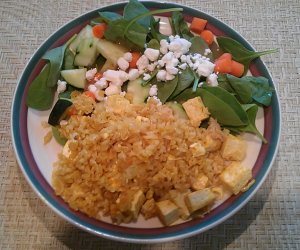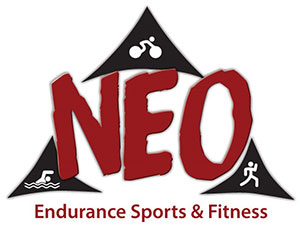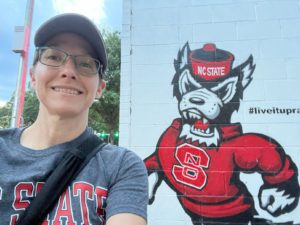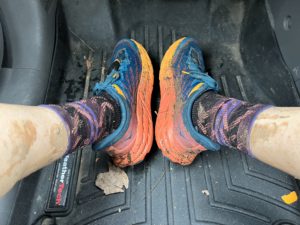You just got back from a long training session and need to eat. What should you have?
Some athletes “justify” a calorie-laden meal because “they earned it.” We probably all have seen those people in local coffee shop order a 500-calorie sugar-filled drink after they just spent 30 minutes walking on a treadmill. These are the people who will wonder why they aren’t changing their body composition or losing weight when they workout a lot. They will also wonder why they are hungry 30 minutes later.
Short or easy training sessions don’t really need recovery meals. These are not burning through your glycogen stores and you can work them in between your normal eating patterns. A 30-45 minute run’s “recovery” meal might just be your breakfast of greek yogurt, fruit and walnuts. Same thing with a 60 minute zone 2 bike ride.
But when we’re out for longer and burn through a big chunk of our glycogen stores, we need to make sure we eat good foods to replenish it.
Here are some guidelines when building your post-long workout meal.
Macronutrients
1) Carbohydrates. The recovery meal is build around carbohydrates. Carbs replenish glycogen stores, so you want to include your whole grains in this meal. If you don’t eat grains, other sources of carbohydrates such as fruits, starchy vegetables, and beans would be options.
How much? Consume about 1-1.2g of carbohydrate per kg of body weight. A 150lb person (68kg) would want to consume 68-82g of carbohydrate in their recovery meal. A serving of quinoa (1/4c dry) has about 30g of carbohydrates. A cup of sweet potato has 27g of carbohydrate. A cup of cooked brown rice has 45g of carbohydrate. A half-cup of black beans has 19g of carbohydrate.
2) Protein. Include a decent amount of protein in this meal. Protein helps your muscles rebuild, so it’s critical in a recovery meal. Lean proteins (fish, chicken, low/non-fat dairy, etc) are good choices.
How much? Aim for somewhere around 10-25g of protein, or about 25-30% of your carbohydrate content. Four ounces (0.25lb) of chicken breast is about 23g of protein. A can of tuna has about 26g of protein. A half-cup of black beans has 7g of protein.
3) Fats. Fats help with cell repair, but in our recovery meal, we don’t need to worry about an exact amount. Carbohydrate and protein are the more important macronutrients. But the fats that you do include should be healthy fats such as those from nuts, seeds, avocado, and coconut oil.
A recovery meal shouldn’t be complicated. Choosing real food that isn’t refined/processed will give you better nutrient density to aid in recovery.
Amount
Let’s talk a little more about the amount to eat. That 150lb person eating around 75g of carbohydrates (300cal), 20g of protein (100 calories), and maybe 10g of fat (90 calories) has just consumed 490 calories in their recovery meal. Your recovery meal needs to be quality, but it doesn’t have to be huge.
Looking a little more closely at some numbers (granted these are estimates – everyone will be slightly different). If you are that 150lb person and run about 10 miles and burn 1000 calories, or ride for 2-2.5 hours and burn 1000 calories, you are replacing half of what you burned with your recovery meal.
If you went into the workout well fueled, and perhaps ate 100-200 calories during your workout, you are in a good spot. If your workout was longer, chance are you consumed more calories during your workout, so you still might not need more in your recovery meal.
I would like to point out that devices often overestimate our caloric burn, so be careful there. If you train with a powermeter on the bike, use the total kJ number to estimate calories burned. For running I usually estimate 100 calories per mile, but that is going to vary by effort and body weight. It might be closer to 80 for some, 120 for others.
After you eat your recovery meal, use your hunger as a guideline for when to eat next. Your other meals should then be based on lean proteins and healthy fats, then vegetables and fruits, and then whole grains.
It’s also important to eat mindfully, meaning slowly! It’s easy to wolf down a few too many cinnamon rolls after a long run! If your training load is high, you might get hungry again just a couple hours after your recovery meal.
If you’re not sure what you are eating, log it in a nutrition tracker, like the one found in TrainingPeaks to get an idea of total calories and macronutrient breakdown.
Timing
Ideally after a long and/or hard workout you are eating a recovery meal within about 30 minutes of completing your exercise. Often have a full meal this close to your workout is not possible, so that’s when the recovery snack comes into play. A small snack that includes a 3:1 or 4:1 carbohydrate to protein ratio is considered ideal. Reach for nutrient dense real food, but sometimes recovery drinks/shakes from sports nutrition companies are convenient and will tide you over and start the recovery process until you can get to your real recovery meal.
You might find that the day after a long workout you get hungry more often. In this case eat snacks higher in healthy fat and protein that will help stabilize your blood sugar and keep you satisfied longer.
Examples
Recovery snacks:
- ½ cup of greek yogurt and a banana
- Handful of trail mix that includes dried fruit
Recovery meals:
- Whole grain or other (ie garbanzo bean flour) pancake with blueberries and walnuts. Using egg or egg white in the pancake will add protein
- Chicken with rice and vegetables
- Black beans and quinoa with a salad
- Smoothie made with banana, blueberries, spinach, milk (soy or almond or other), protein powder & milled flax seed

Happy training and eating!




